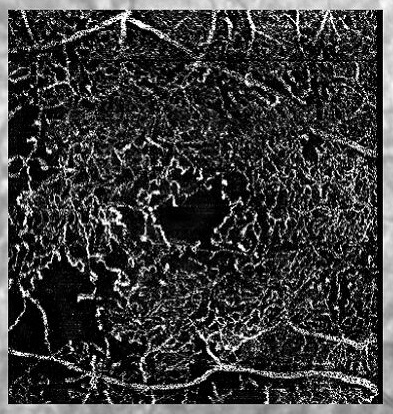A Simple Eye Exam Could One Day Be The Key To Diagnosing Alzheimer’s Disease Early

Alzheimer’s Disease is a devastating and progressive disease of the brain which is often characterised by memory loss and disturbances in other cognitive functions, such as language and perception of reality.
In Australia, Dementia (which includes Alzheimer’s Disease) is the second leading cause of death behind heart disease. With 250 new cases diagnosed every day.
At present Alzheimer’s Disease is typically diagnosed once behavioural symptoms become obvious. Which can often mean the disease is not diagnosed until quite late in its progression.
However, a recent study of more than 200 people conducted at the Duke Eye Center in North Carolina, may have discovered a way to diagnose Alzheimer’s Disease much earlier by examining the loss of blood vessels in the back part of the eye called the retina.
The study was conducted using a specialised, non-invasive technology called optical coherence tomography angiography (OCTA).
OCTA machines use light waves that reveal blood flow in every layer of the retina and are able to measure blood vessels that can’t typically be seen during a regular eye exam.
The researchers believe that it is possible that changes observed in blood vessel density in the retina could reflect what is happening in blood vessels in the brain.
This technique could potentially identify the onset of Alzheimer’s disease before any changes are detected by conventional means such as an MRI or cerebral angiogram.
The study found that in people in the control group (those with healthy brains, showing no obvious signs of dementia) microscopic blood vessels formed a dense web inside the retina.
While those who had already been diagnosed with Alzheimer’s disease, tended to have a web of blood vessels that was significantly less dense.
These differences in density were statistically significant after researchers controlled for factors including age and gender.
The study also found differences in the retinas of people with Alzheimer’s disease when compared to those with mild cognitive impairment, often a precursor to Dementia.
Ultimately, the goal of the current research team is to use this OCTA technology to detect Alzheimer’s Disease early, before symptoms of memory loss are evident, and to monitor these changes over time.
Hopefully, one day providing an early diagnostic tool for health care practitioners.
While OCTA is not currently used as a diagnostic tool for Alzheimer’s in Australia, it does play an important role in the diagnosis of other serious conditions such as Maclar Degeneration.
At the Northern Eye Centre our specialists use OCTA in conjunction with other tests to assess the health of our patients’ eyes.
If you would like to discuss the health of your eyes with one of our experienced eye doctors in Melbourne please call 03 9459 5133 or fill out an appointment for on our website.
